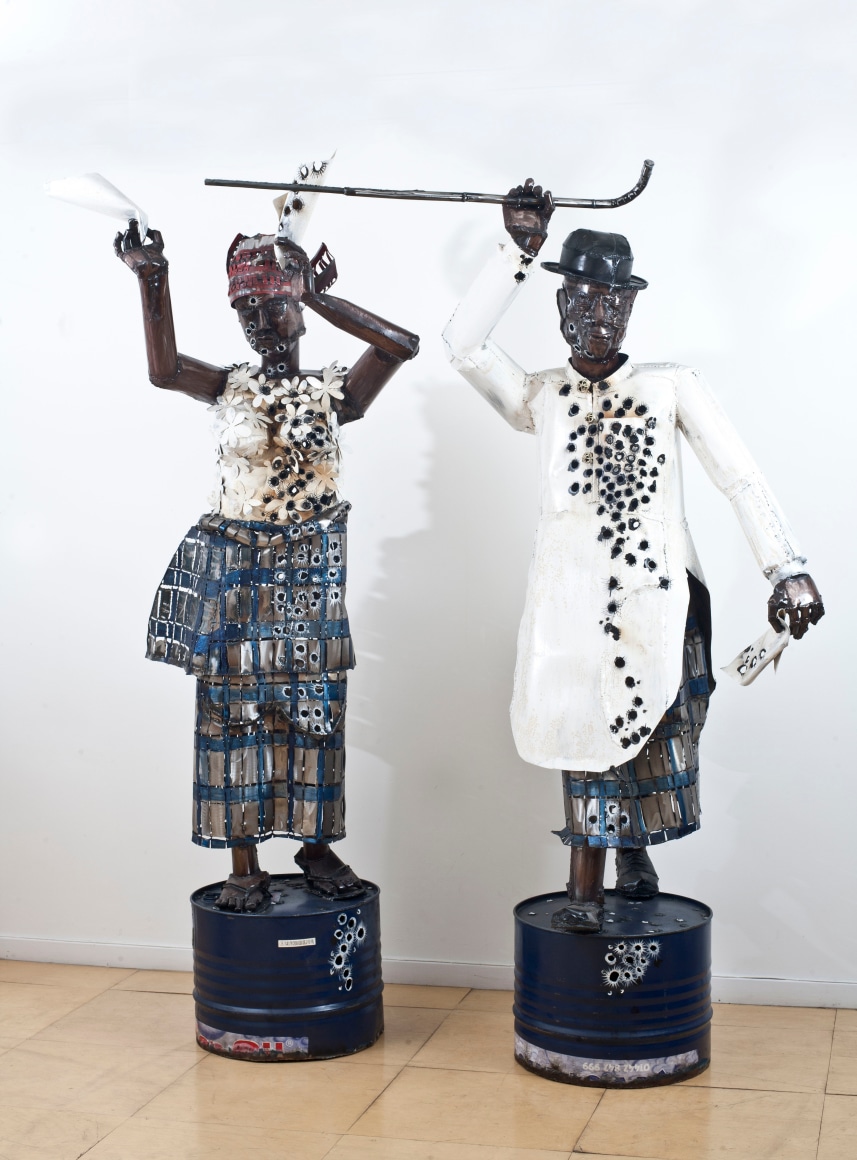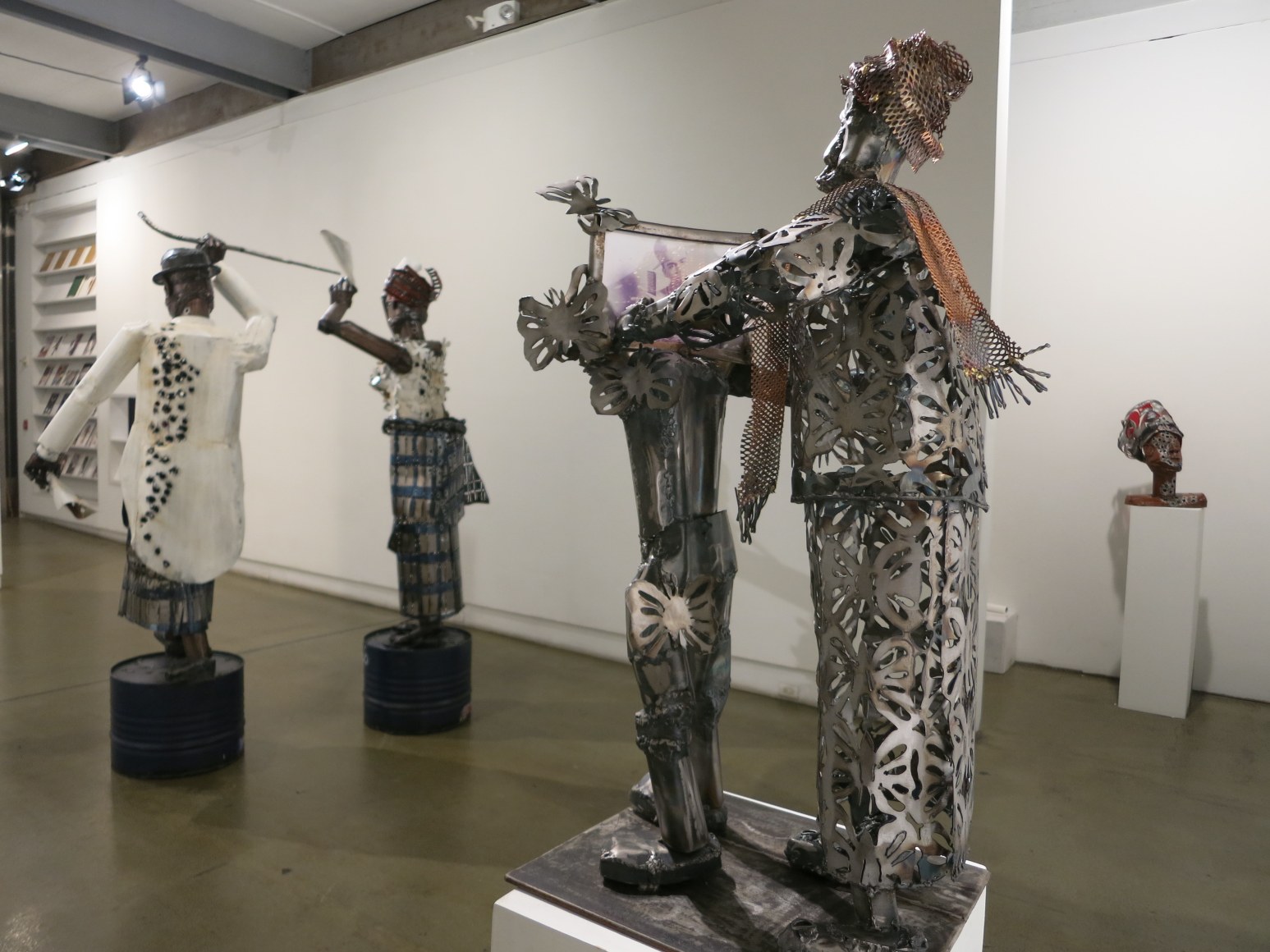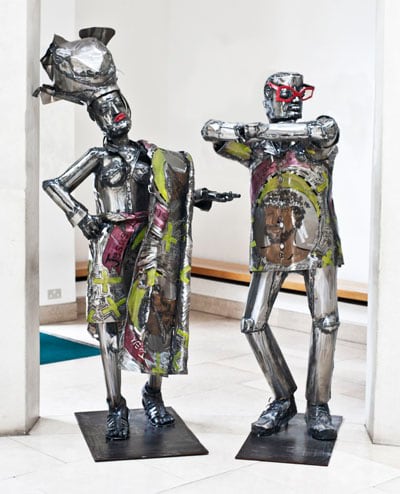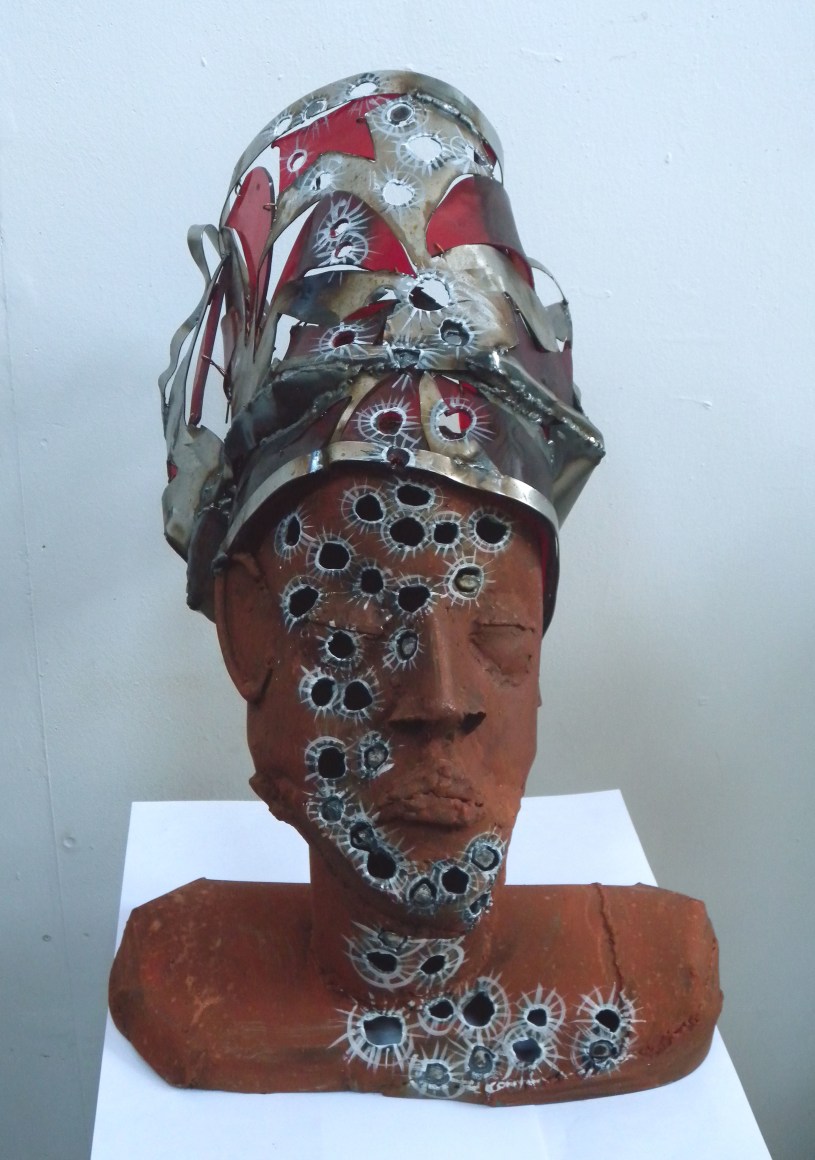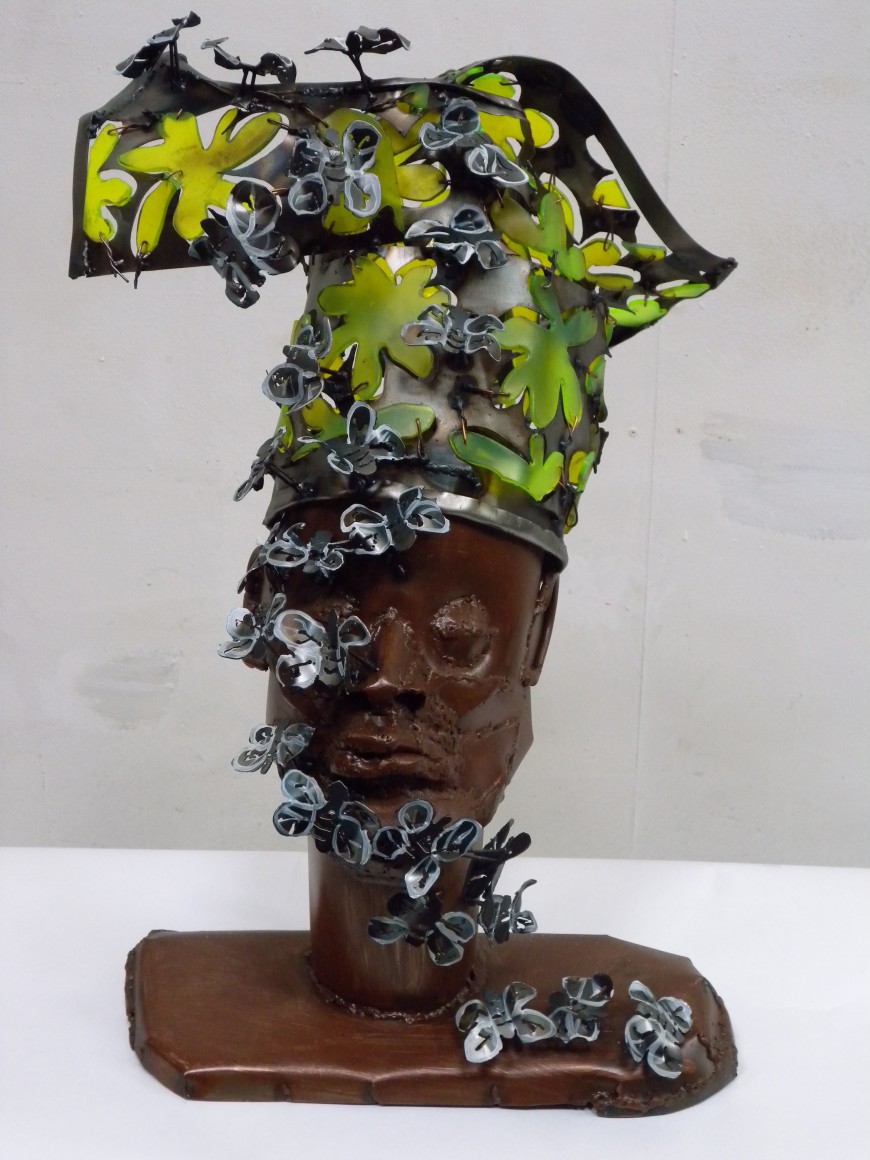Stux Gallery is pleased to announce a solo exhibition of new works by Sokari Douglas Camp, CBE, “Dressed to the Nines”. Sokari is the 2005 recipient of the Commander of the Order of the British Empire (CBE). Renowned for her powerful, monumental steel sculptures that address political themes that link her to her native land of Nigeria, her effortless integration of African aesthetics is instinctive rather than driven by Piccaso-esque fascinations, and her works can be compared to those of Nick Cave, Antony Gormley and Yinka Shonibare. Her new sculptures continue her provocative thesis with tender yet boldly visceral visions of the post-colonial world, and introduce daily lives of African immigrants in the West as a new subject.
Inspired by her observations of Pentecostal Londoners who outfit extravagantly to secure husbands and business partners as well as violence against Christians in Nigeria, “Jesus Loves Me” is vibrantly celebratory at its core. Pronouncedly influenced by the African art idiom, these sculptures are made from raw, blank shiny steel that is completely naked except a painted portrait of Jesus and some bold, hip eyewear. Their postures are casual and liberated, but also delightfully robotic like knights enclosed in ill-fitted armor. The ancient notion of religion and the ephemeral yet striking powers of fashion are united to illustrate a phenomenon that highlights the body and traditional beliefs as immovable centers of society.
The “Butterfly Head” is a pensive bust of a woman with shut-eyes. Seams from bluntly soldered steel that disfigure her face narrate a systematic process of construction and carry a sense of stern formidability. Her traditional headdress is bejeweled with incandescent, flower-like splatters of neon green plastic that also reek of toxic, radioactive waste. A fluttering string of black butterflies with silver-lined wings meanders across the torso, face and headdress. Although stylized to buzz about like festering flies, they sublimate the heavy, industrial sculpture to a dreamlike state.
In works such as “Material Salsa”, Camp explores the lives of immigrants from a psychological, raw perspective. In this work, a mother and her son are holding hands. Even though the connection between them is permanent and confirmed, the son is turning and walking away. Both figures, although clearly linked by their skin tone and facial features, are more pronouncedly defined by their clothing. Despite her stiff, cage-like presence, the motherʼs lace- like steel garment is intricately weaved with a delicate, feminine softness. The sonʼs white T-shirt and jacket are marked by Formula One symbols and clear connections to the complex institution of oil profiteering. It appears as if he is hollow inside the clothing, and his trousers are practically segments of oil pipes. The steel surfaces are plain and smooth, creating perfect backdrops for the overwhelming networks of symbols in contemporary society.
“In my childhood, robbers were tied to oil barrels to be executed, People still have a belief that we can sort out our problems by shooting the corrupt?” The sculpture “Purge” explores the horror of that thought. The figures are dressed in the most respected traditional attire. The two figures are conjuring music and dancing fervently on top of barrels designed to contain oil, the catalyst for chaos in the Nigerian Delta. A generous layer of bullet holes neatly sprinkles across the extravagant clothing, but the impact is so meek that the sculptor hurries to frame them with brushstrokes to highlight their presence.


